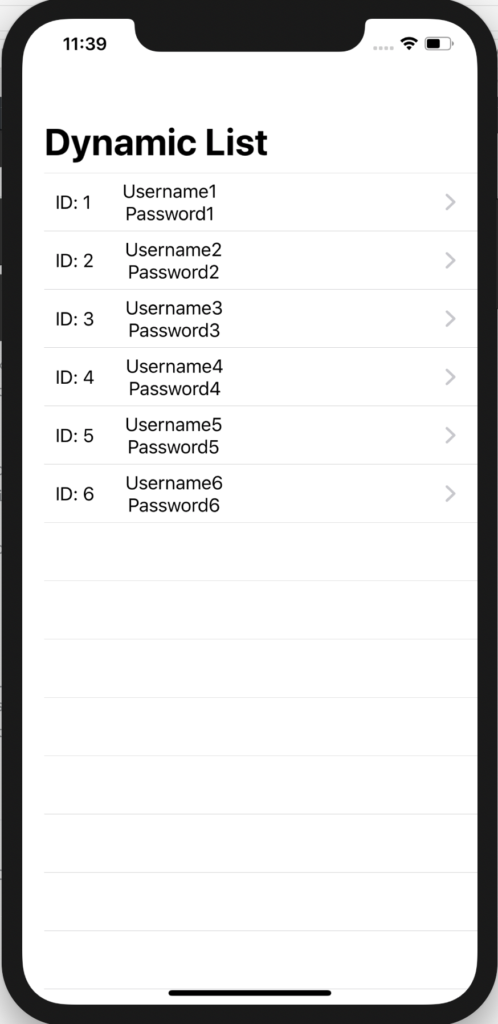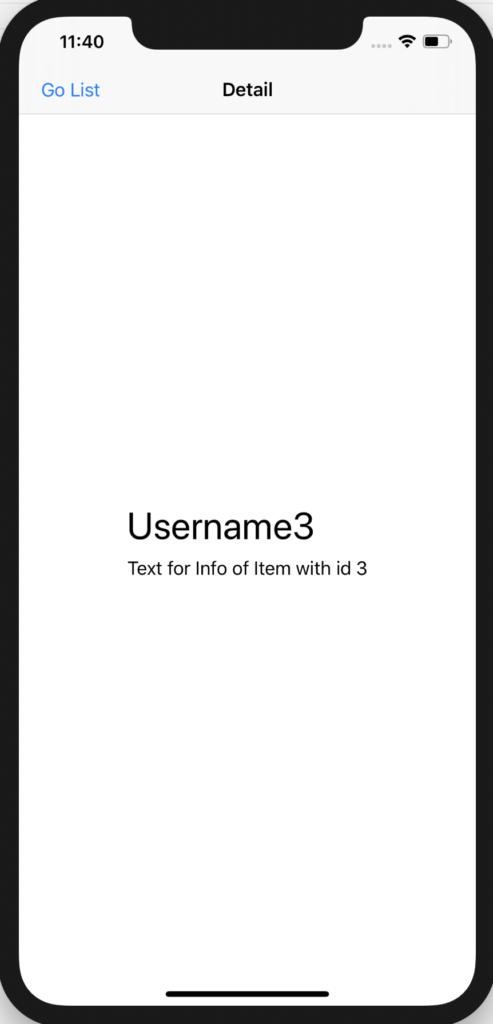In this post, we will see how to create a View Detail, using the dynamic list created in the post: SwiftUI – Static and Dynamic List.
First of all, we modify the struct User adding a new property called “Info”:
1 2 3 4 5 6 | struct User: Identifiable { var id: Int var Username:String var Password:String var Info: String} |
Then, we create a SwiftUI View called “DetailUser” that, we will use to show the details of an User object:
[DETAILUSER.SWIFT]
1 2 3 4 5 6 7 8 9 10 11 12 13 14 15 16 17 18 19 20 21 22 23 24 25 26 27 28 29 30 31 32 33 34 35 36 | import SwiftUIstruct DetailUser: View { // it is a property wrapper that allows any view access to global dependencies @Environment(\.presentationMode) var presentationMode var objUser:User var body: some View { VStack(alignment: .leading, spacing: 8) { Text(objUser.Username).font(.largeTitle) Text(objUser.Info) } // Define the title of the View .padding().navigationBarTitle("Detail", displayMode: .inline) // Hide the back button .navigationBarBackButtonHidden(true) // Add your custom back button here .navigationBarItems(leading: Button(action: { // define an action self.presentationMode.wrappedValue.dismiss() }) { // Define the button's text Text("Go List") }) }}// These lines of code mean that whatever code is wrapped within these commands, will only be shown in the preview for debugging purposes.#if DEBUGstruct DetailUser_Previews: PreviewProvider { static var previews: some View { DetailUser(objUser: User(id: 1, Username: "test", Password: "test", Info: "test")) }}#endif |
Finally, we have to add the DetailUser view into the file “ContentViewList.swift”:
[CONTENTVIEWLIST.SWIFT]
1 2 3 4 5 6 7 8 9 10 11 12 13 14 15 16 17 18 19 20 21 22 23 24 25 26 27 28 29 30 31 32 33 34 35 36 37 38 39 | import SwiftUIstruct ContentViewList: View { // define a varible called lstUser let lstUser: [User] = [ .init(id: 1, Username: "Username1", Password: "Password1", Info: "Text for Info of Item with id 1"), .init(id: 2, Username: "Username2", Password: "Password2", Info: "Text for Info of Item with id 2"), .init(id: 3, Username: "Username3", Password: "Password3", Info: "Text for Info of Item with id 3"), .init(id: 4, Username: "Username4", Password: "Password4", Info: "Text for Info of Item with id 4"), .init(id: 5, Username: "Username5", Password: "Password5", Info: "Text for Info of Item with id 5"), .init(id: 6, Username: "Username6", Password: "Password6", Info: "Text for Info of Item with id 6")] var body: some View { // Defintion of a Navigation Controller NavigationView{ // put the array into a List List(lstUser) { item in NavigationLink(destination: DetailUser(objUser: item)) { HStack { Text("ID: \(item.id)") VStack { Text(item.Username) Text(item.Password) }.padding(.leading, 20) }.padding(.leading, 10) } }.navigationBarTitle("Dynamic List") } }}struct ContentViewList_Previews: PreviewProvider { static var previews: some View { ContentViewList() }} |
Now, if we run the application, this will be the result:

